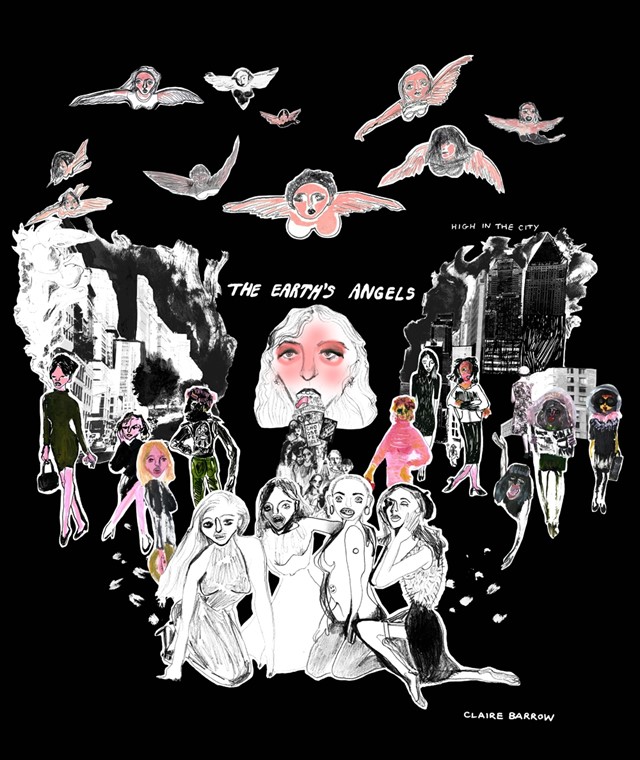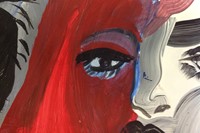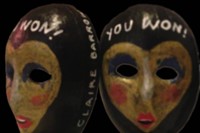Designer Claire Barrow discusses her DIY aesthetic as demonstrated at a recent Tate workshop
In 2012, Claire Barrow whimsically painted a series of clouds and blue skies across a beaten leather jacket, a move that has evolved into an entire collection of hand-painted jackets, shirts and dresses, emblazoned with brushstrokes, characters and symbols that read like moving sketchbooks of the designer's personal thoughts. Now Barrow has collaborated with brands including Joseph, American Apparel and Underground, creating a unique cult following for her DIY aesthetic.
The idea of slogan tops and customised leather is dotted throughout history, providing a canvas for subcultures to express their individuality: McClaren and Westwood led the painted-leather punk trend during the 1970s, while during WWII, pilots would paint their flight jackets with pin-up girls, comic characters and lucky charms. Inspired by the ‘Energy and Process’ collection gallery at the Tate Modern, Barrow put on a Tate workshop last weekend, focusing on feminine stereotypes and how DIY fashion helps to define identity. Here AnOther speak to Barrow about the workshop.
What was your Tate workshop about?
I wanted to talk to the Tate Lab audience about how fast fashion has become commonplace in our society. We don’t create our own clothes anymore. In the way in which I create my clothes in a DIY manner, I want to show how easy and rewarding it can be to make something yourself. Using craft materials (a large variety of fabrics and second hand garments, wool, cardboard, paper, newspaper, paint, plastic sheets, cellotape, masking tape, staples, chain, buckles, Christmas decorations, straw, rubber gloves, etc) participants (aged 15-25) had to make a garment without using a needle and thread or sewing machine.
The winning team received a hand-painted trophy that I had made for the occasion.
"I want to create clothes for people who have a strong sense of their own identity and challenge ideas of gender and their place in society"
Featured stimulis for the workshop included Tracey Emin's Hate and Power Can be a Terrible Thing (2004); Margaret Harrison's Homeworkers (1977-); Annette Messager's The Pikes (1992-3) and Rosemarie Trockel's Untitled' (industrial knitting machine pattern made with wool and mounted on canvas).
Tracey Emin, Margaret Harrison and Annette Messager used everyday objects to create their art. An everyday technique or material can become a symbol or subversion and an object of beauty. I also wanted to explore how the everyday object can have various meanings when put outside its context. I feel that my work challenges the fashion industry in the sense that I use a lot of DIY methods and I have not built my designs on consumerist notions of fashion but my own desires and ideas. I want to create clothes for people who have a strong sense of their own identity and challenge ideas of gender and their place in society much like the collection of female artists have done with the artworks displayed in this exhibition.
Is there any old craft that you would like to learn or be more skilled at?
Traditional leather tooling. I am not even sure how good I would be at it because I have never tried, but would love to give the traditional motifs my own spin.
Text by Mhairi Graham



